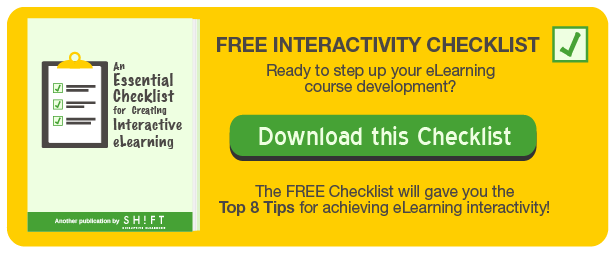Elearning provides solutions to typical on-campus education problems such as schedule flexibility, expenses related to travel time and residence, and accessibility. Unfortunately, these benefits are countered by the steady decline in eLearning completion rates, a threat that eLearning companies and advocates have been battling over the last decade. Elearning development managers must fully understand the factors that cause high attrition rates in order to properly address the problem and ensure high completion rates.
Here are some of the top causes of low completion rates and how they can be solved:
Make sure you check out Part II and read the other 14 items.
New technology
Problem: eFirst time eLearners, especially the less tech-savvy, may find the deviation from traditional learning methods overwhelming and may distract them from the actual study module. Managers must devote reasonable time to acquaint eLearners with the procedure before introducing the eLearning syllabus.
 Solutions:
Solutions:
1. One step at a time. Let them get used to the eLearning environment before you ask them to start to using the software.
2. Give them options. Managers can either implement a technology acquaintance session for all learners or offer the option to learners who indicate themselves to be new to the procedure.
Lack of motivation
Problem: Unlike the typical classroom setup where there is face-to-face interaction between students and instructors, eLearners literally report to a computer.
Solutions:
4. Reinforcement learning. Reinforcement learning can address this concern. A person's behavior, whether positive or negative, is reinforced according to the outcome of a specific action. In eLearning, good study habits can be reinforced by regular exams and timely feedback from the administrators. When an eLearner feels that he gains significant knowledge and skills, he is motivated to learn more. Another suggestion is to implement a flexible virtual classroom where learners can interact with one another as well as the instructor, as the group dynamics help foster motivation for learning.
 5. Get your learners talking! Encourage interaction between learners and also with the instructor. These social and the group dynamics will help foster motivation for learning.
5. Get your learners talking! Encourage interaction between learners and also with the instructor. These social and the group dynamics will help foster motivation for learning.
6. Build a “learning culture” that supports and values eLearning. This culture should take online learning just as seriously as classroom training.
7. Set expectations clear up front since the beginning. Include expected behaviors either in a syllabus or at the start of the course.
8. Encourage managerial guidance. If learners receive reinforcement and follow-up and if they feel their progress is been tracked, they are more likely to finish the course.
Lack of support
Problem: Elearning development should encompass strategies that make it easy to provide answers toeLearners' possible questions in real time. It may be difficult to answer questions in real time, but managers must have frequent and regular interaction with eLearners, may it be in the form of chat, email, or phone conversation. The virtual classroom setting mentioned above is an excellent real time support dynamic, however, the problem will lie in flexibility. Matching the schedule availability of instructors and learners can help address this, e.g. matching instructors with learners in the same time zone.
Solutions:
 9. Vary the types of communication, for example use a bulletin board for discussions and e-mails.
9. Vary the types of communication, for example use a bulletin board for discussions and e-mails.
10. Offer incentives for group participation. Encourage learners to participate in group discussions. As well, make it personal by answerign individual questions on a bulletin board.
11. Have a dedicated coordinator or manager who will be a contact point for learners.
Do you have any suggestions to ensure that your employees complete the online courses assigned to them without dropping out mid-way?
Just a tip for getting started: Before you publish your course, ask yourself if it's something you think your learners will want to read and complete. Is a course worthy of taking?



